When your heart is set on introducing a pet African Grey to your life, you’re faced with a charming dilemma: should you choose a male African Grey or a female African Grey? Understanding the African Grey temperament and the subtle nuances of an African Grey’s personality is paramount in making a decision that aligns with your expectations of pet companionship.
While the prospect of selecting the perfect feathered friend might jog your memory of the musical “Cats” with the line “A cat is not a dog,” it’s just as critical to remember that in the realm of parrots, specifically the illustrious African Grey Parrot, gender isn’t as straightforward as one might think. As you navigate the choices, rest assured that the joy and intrigue they bring to your life will be immense, regardless of whether you settle on a male or female companion.
As you ponder over this guide, keep your lifestyle in mind and consider how a pet African Grey will fit into it. Are you ready to learn and appreciate the distinct qualities these majestic creatures harbor? Let’s unfold the mystery together and help you choose your ideal avian companion.
Understanding African Grey Parrot Species
Embarking on the journey to bring an African Grey parrot into your home comes with the delightful task of understanding the nuances between the two primary species within this intelligent bird family. As your curiosity unfolds, you will be fascinated to discover the differences that define the Congo African Grey parrot from the Timneh African Grey parrot, alongside the intriguing challenge of identifying African Grey gender differences.
With both species exuding charm and the propensity for deep bonds with their human companions, every aspiring owner should consider the distinct characteristics of each species before making their choice. From the perspective of appearance to their renowned cognitive abilities, African Grey parrots are truly a marvel in the avian world.
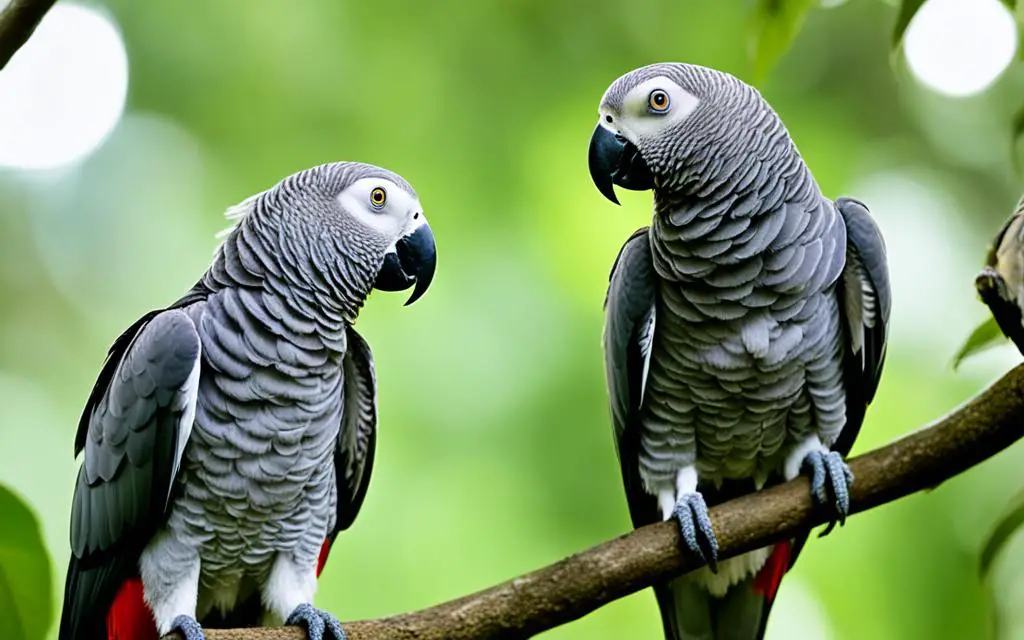
The Difference Between Congo and Timneh African Grey Parrots
The Congo African Grey parrot, instantly recognizable by its eye-catching, bright red tail feathers, is the larger of the two species, typically showcasing a stunning dusting of light grey color over their bodies. They are often the first choice for those looking to adopt an African Grey, as their size commands a presence that is both regal and endearing.
Conversely, the Timneh African Grey parrot appears with a darker grey plumage and a maroon tail, which can easily distinguish it from the Congo variant. Smaller in size, the Timneh carries with it a sense of understated elegance combined with all the intelligent traits of its larger cousin, making it a compelling choice for potential parrot parents.
Identifying Characteristics of African Grey Parrots
Given their monomorphic nature, identifying African Grey gender differences can be a subtle science. Generally, males are noted to be taller, with a round body and a comparatively shorter neck. Females, on the other hand, might appear more slender, with longer necks and larger, rounder heads. Observant potential owners may also notice a slight variance in coloration, where male Greys might exhibit a uniform color compared to their female counterparts.
It is worth noting that while these traits can offer hints, they are not definitive indicators of a parrot’s sex. For those determined to understand the specific gender of their African Grey, DNA testing remains the most reliable method. As such, embracing the ambience that either gender of the African Grey species brings is often the recommended approach, as both males and females are equally capable of weaving their individual personality into the fabric of your daily life.
Should I get a male or female African Grey?
When embarking on the journey of choosing an African Grey, many soon-to-be parrot owners wonder if there’s a distinct advantage in selecting a male versus a female African Grey. As both genders showcase high levels of intelligence, an inherent need for stimulation, and the potential to develop impressive talking abilities, your decision may largely hinge on compatibility with your lifestyle and which gender you feel you can bond with more deeply.
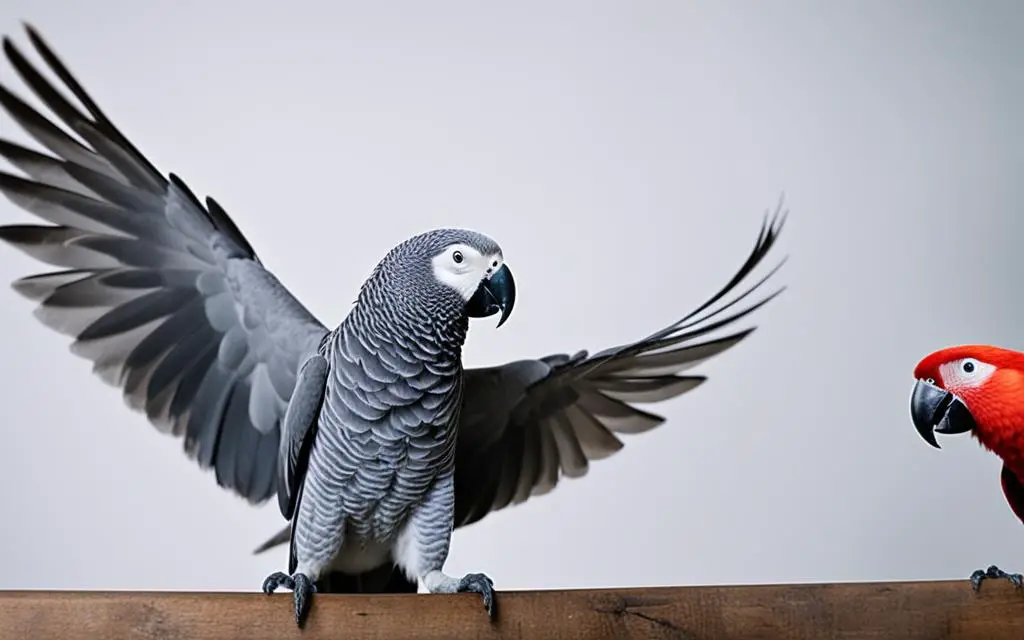
African Greys are known for their ability to form strong attachments with their owners, a trait we often describe as African Grey bonding. Whether you bring home a male or a female African Grey, the bonding process is crucial and requires time, patience, and consistent interaction.
Anecdotal evidence provided by long-term African Grey caretakers hints that there might be subtle behavioral differences between genders. For instance, females are often touted as potentially being better talkers and less likely to develop fears or phobias as they age. Meanwhile, males are sometimes perceived to showcase a consistent temperament and may express a protective instinct, particularly around women. However, it’s important to remember that these are generalizations and not rules set in stone.
Ultimately, when it comes to choosing the best African Grey for you, consider that individual personality traits and the bird’s upbringing play a substantial role in their future behavior and adaptability. Gender may influence certain tendencies, but it does not dictate the capacity for love, learning, and companionship that any African Grey can provide. So as you contemplate male vs. female African Grey parrots, remember to look beyond gender and focus on the unique character each bird possesses to find your perfect avian partner.
To ensure that you make an informed and joyous decision, engage with African Greys of both sexes if possible. Observe their interactions, talk to breeders, and seek out experiences from current African Grey owners. Your efforts will pave the way for a lifelong friendship with a creature whose intelligence and affection know no bounds.
Behavioral Considerations in African Greys
If you’re considering bringing an African Grey into your home, it’s crucial to understand the unique attributes of the African Grey personality. Known for their intelligence and sensitivity, these remarkable birds mirror the complexity found in human temperament. The African Grey temperament can be incredibly rewarding, as these birds often develop deep connections with their caregivers, becoming akin to a one person bird. However, this dedicated loyalty means that they crave substantial interaction and mental engagement.
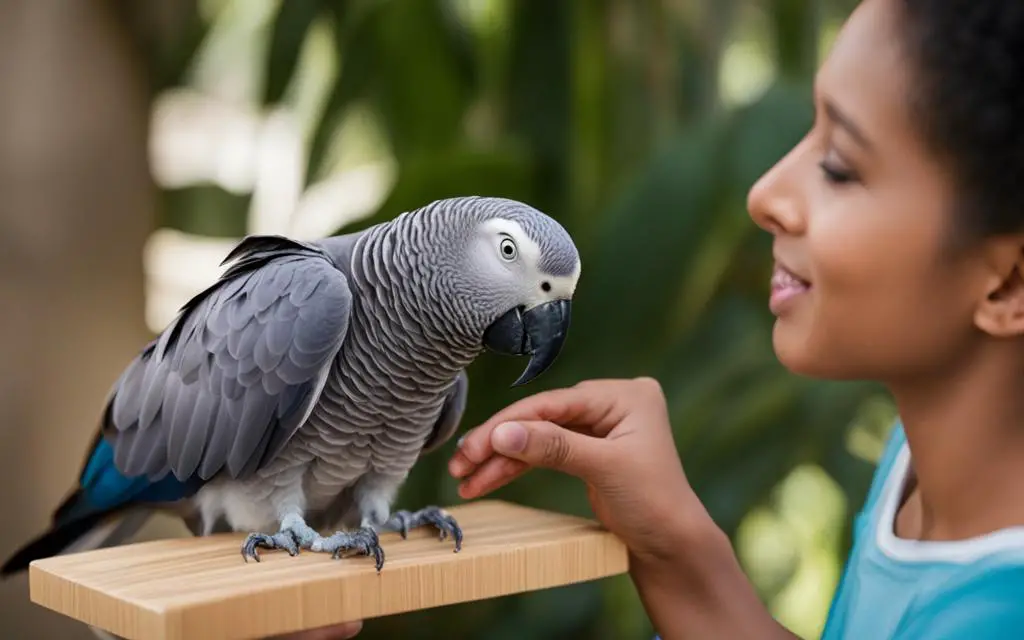
African Greys might display a strong preference for one particular member of the household. This trait can offer you a loyal and attentive companion, but it can also pose challenges for families or households where multiple people wish to engage with the bird. When they bond, they bond for life, making the relationship you build with your pet African Grey a crucial aspect of their well-being and happiness.
When it comes to handling, your African Grey’s response can be heavily influenced by the trust they have in you. Early and consistent African Grey training is essential. Through positive reinforcement and patience, you can foster a well-behaved and sociable bird. Training will also help in mitigating their natural instinct to be nippy African Greys, especially when they are exposed to unfamiliar situations or feeling stressed.
Before deciding on welcoming an African Grey into your life, consider how much time and attention you can dedicate to their mental stimulation and training. They are not just pets; they are companions that will need your love, understanding, and commitment. With the right approach, an African Grey can be a profoundly enriching addition to your life, offering an unmatchable blend of charisma, intelligence, and affection.
Sexing African Greys: Visual Clues and DNA Testing
Distinguishing the gender of your African Grey parrot can be quite the conundrum due to their monomorphic nature. This means that visually, males and females are identical, making it challenging for parrot enthusiasts to identify their pet’s sex on visual gender clues alone. While there are some physical differences that might give you a hint, these are not always reliable. As a responsible parrot owner, finding the accurate sex of your African Grey is important not only for breeding purposes but also for tailored healthcare and understanding of behavioral characteristics.
The Monomorphic Nature of African Greys
African Grey parrots present a unique challenge when it comes to sexing African Greys. Their identical plumage and size mean that, unlike many other bird species, you can’t tell them apart by merely looking at them. This monomorphism adds an interesting dimension to caring for these intelligent birds, as any perceived African Grey gender differences don’t stem from visual cues as much as from individual personality traits and behaviors.
Common Physical Differences Between Male and Female Greys
In your quest to understand African Grey gender differences, you might come across resources that suggest observing subtle distinctions in body shape or feather patterns. For example, males are generally believed to have rounder bodies and shorter necks, whereas females may be slimmer with longer necks. Proponents of African Grey visual gender clues might also mention differences in the coloration of feathers. With all these potential indicators, remember that they can often lead to speculation rather than certainty.
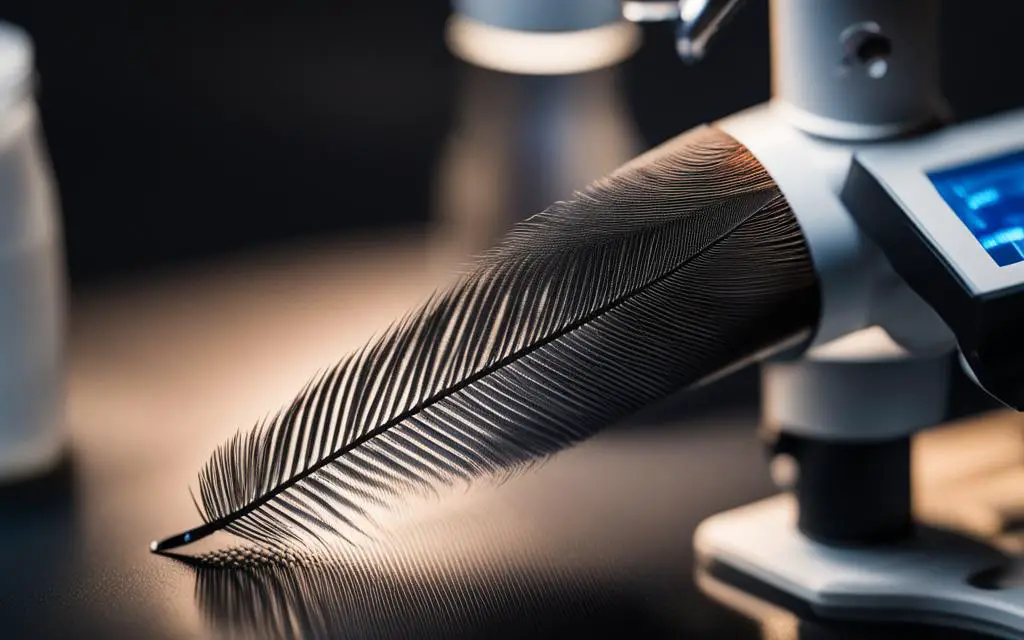
For those who require certainty, especially breeders or owners concerned about health-specific gender issues, African Grey DNA testing has become the go-to method. DNA testing offers a definitive answer, providing the peace of mind for those wishing to understand their pet’s needs fully.
| Visual Gender Clues | Likelihood of Accuracy |
|---|---|
| Body shape (Round male vs. slender female) | Sometimes accurate, but not reliable |
| Neck length (Shorter in males vs. longer in females) | Potential clue, yet inconsistent |
| Head size (Smaller and flat in males vs. rounded in females) | Varies individual to individual |
| Feather coloration pattern | Often misleading, age-dependent |
| DNA testing results | 100% Accurate |
African Grey DNA testing typically involves a straightforward collection of a blood sample, feather, or less commonly, eggshells. You might opt for an at-home testing kit or choose to visit a specialist veterinarian who can ensure the process is carried out effectively. It’s a non-invasive, low-risk way to reveal what’s beneath those elegant grey feathers.
If you’re looking to add a feathered companion to your life, remember, the gender of your African Grey can notably influence factors from behavior to healthcare. Embrace the learning curve that comes with these magnificent birds. Whether male or female, your African Grey will bring endless fascination and joy into your home.
The African Grey’s Social Dynamics: Male vs. Female
Have you ever wondered about the captivating world of African Grey social behavior? Whether you’re planning to welcome one of these intelligent birds into your home, or simply fascinated by their social traits, it’s interesting to note how gender might play a role in their interaction with humans and fellow avians. Observing the nuances between male African Grey bonding and female African Grey behavior can provide delightful insights into the social fabric of these charming creatures.
Male African Greys are often described as exhibiting protective behaviors, potentially forming a stalwart bond with female owners. It’s not unheard of for a male Grey to display a sense of guardianship, reflecting perhaps the traditional roles seen in the wild. Conversely, female Greys might show a particular affinity towards male members of the household, reflecting their preference in a flock’s social hierarchy.
| Gender | Observed Behavioral Trait | Interaction with Owner |
|---|---|---|
| Male African Grey | Protective, More Likely to Bond with Females | May exhibit loyalty and guardianship |
| Female African Grey | Expressive, Might Prefer Male Companionship | Shows preference but can be particular |
Yet, it’s important to stress that these pet African Grey social traits are not cast in stone; much like people, individual upbringing and personality greatly influence the bird’s social dynamics. While you might hear stories of a male Grey being the life of the party or a female charmingly engaging in complex conversations, the individual experiences shape their worldview and reactions.
Remember, the African Grey you bring into your home not only carries the inherent traits of its species but also a unique personality quilt stitched by its individual experiences and upbringing.
Ultimately, regardless of whether you lean towards a male or female African Grey, the bond you cultivate through patience, understanding, and interactive companionship will define your shared social landscape. So, consider the possibility of a male or female African Grey based on what you’ve learned, but keep an open heart to the individual stories each bird has to tell. African Greys are not just pets; they are avian companions ready to weave their own tale into the tapestry of your life.
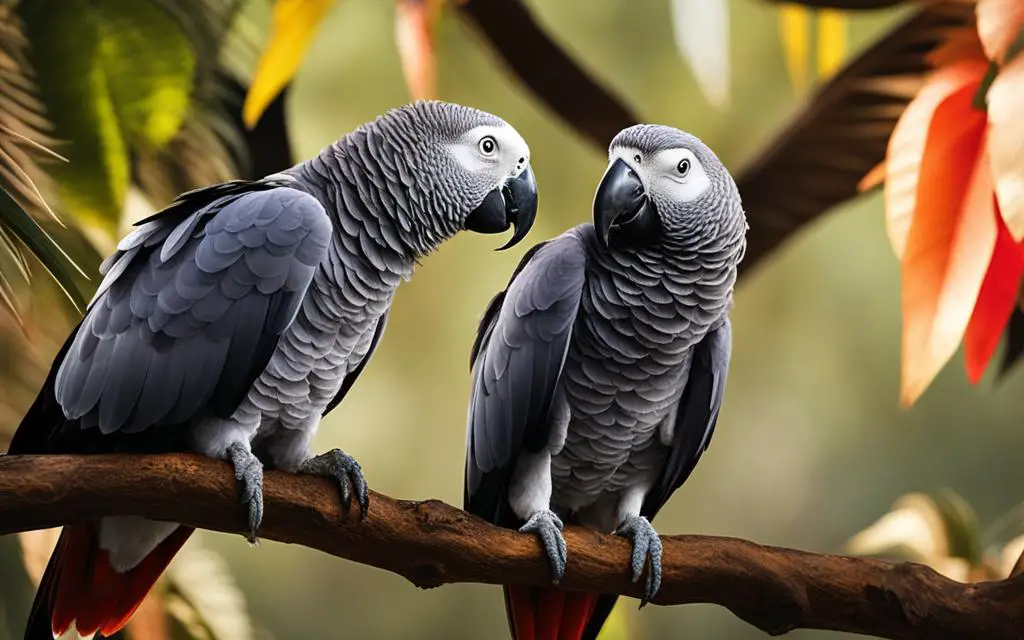
African Grey Talking Ability: Does Gender Matter?
As you delve into the enchanting world of African Grey parrots, you may be pondering whether gender influences their renowned talking ability. It’s a query that has led to many discussions among enthusiasts and experts alike. Do male and female African Greys differ significantly in their capacity for vocalizations, or is this notion just one of the many myths surrounding these articulate birds?
Myths About African Grey Talking and Gender
One prevailing myth is that female African Greys are generally better talkers and are less likely to become phobic with age. The contrast typically casts male African Greys as birds of consistent temperament, potentially less expressive, but allegedly more stable. But let’s put speculation aside and consider the evidence, which indicates that, while there may be African Grey gender differences, these should not overshadow the potent influence of the individual parrot’s environment and upbringing.
Real Experiences with Male and Female African Greys Vocalizations
Delving into the real-life experiences of African Grey owners, we uncover stories of both male and female Greys displaying remarkable feats of speech and sound mimicry. Whether it’s a male African Grey affectionately repeating your favorite phrases or a female playfully emulating the ringtone of your phone, the ability for African Grey talking transcends gender stereotypes. It is interaction, socialization, and personalized care that truly shape these African Grey vocalizations.
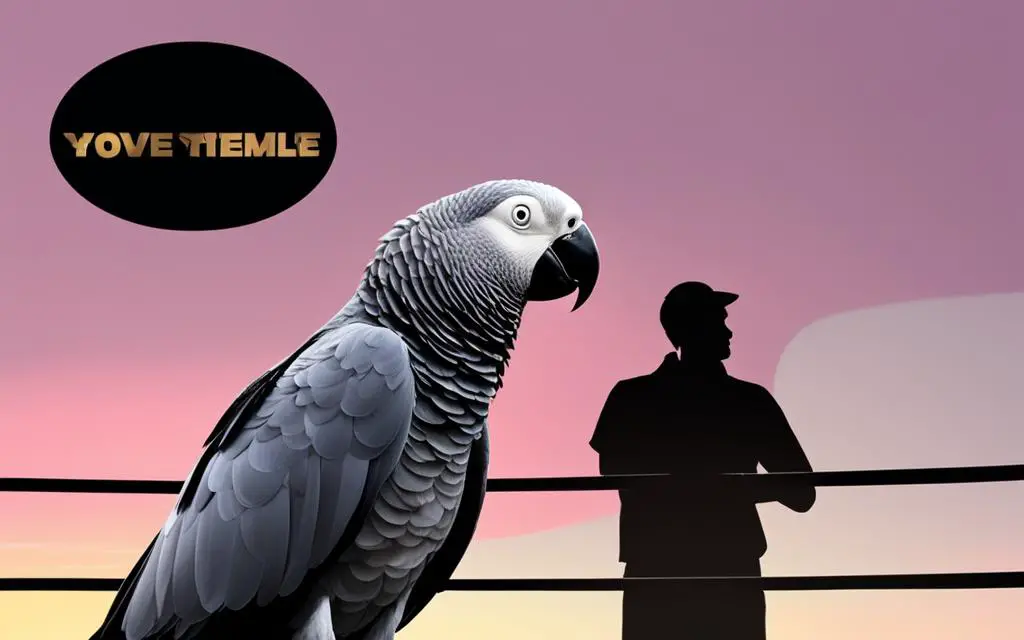
Every African Grey—regardless if they are a male or a female—is a product of their unique experiences. Some may soar in their abilities to communicate verbally while others may express themselves differently. Factors such as interaction with caretakers, exposure to human language, and even the individual bird’s curiosity play a significant role in developing their talking skills.
As you consider adding an African Grey to your family, focusing on the quality of engagement and your bird’s personal environment will be more predictive of their ability to vocalize than the question of male vs. female African Grey talking. African Greys, known for their cognitive prowess akin to that of young children, thrive in environments brimming with opportunities for learning and interaction.
As you connect with your African Grey, embrace its individuality and foster a relationship rich with dialogue and interaction. It is in this bond that the true art of communication with your feathered companion will flourish, regardless of gender.
Health and Nutrition: Special Considerations for Each Gender
Whether you’re the proud owner of a charming African Grey or considering welcoming one into your home, it’s important to focus on African Grey health. Proper African Grey diet plays a crucial role in maintaining their vibrancy and longevity. Yet, there are distinct needs when it comes to the nutrition of egg-laying females compared to their male counterparts. Let’s delve into what you need to know to ensure the well-being of your feathered friend.
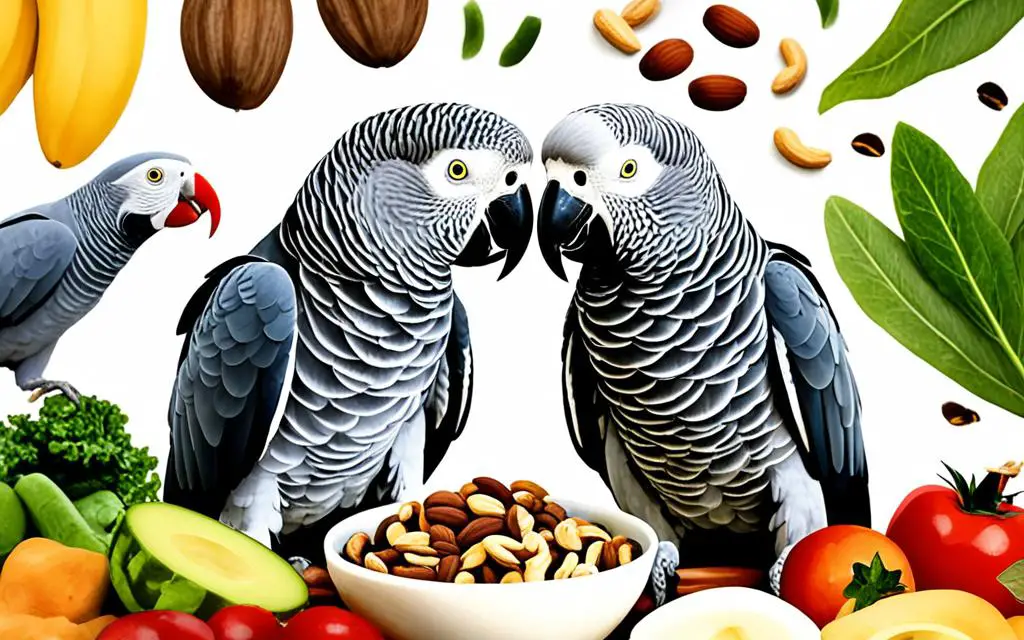
For egg-laying African Grey hens, specific nutritional needs come to the forefront, especially during breeding periods. These needs include an increase in dietary calcium to support egg formation and prevent future health complications like egg binding or calcium deficiency. An egg-laying African Grey nutrition plan that is rich in calcium helps support not just reproduction but their overall skeletal health.
One of the best decisions an African Grey owner can make is establishing a relationship with a trusted avian veterinarian. Preventive care is the cornerstone of any pet health routine, and an avian veterinarian is uniquely qualified to provide guidance on matters from standard care to the intricacies of female African Grey health during egg-laying phases.
| Gender | Dietary Considerations | Additional Needs During Reproduction | Recommended Foods |
|---|---|---|---|
| Male African Grey | Well-rounded diet with balanced nutrients | N/A | Pellets, fruits, leafy greens, nuts |
| Egg-laying Female African Grey | Increased calcium & vitamin D | Extra calcium intake during egg-laying | Cuttlebone, dark leafy greens, fortified pellets |
Aside from these gender-specific considerations, creating clean living conditions and providing a nourishing, varied diet encourages good health in your African Grey. A balanced diet inclusive of high-quality pellets, fresh vegetables, and fruits, coupled with safe, clean housing can prevent many common diseases. Also, don’t forget to provide plenty of fresh water daily and engage in regular health check-ups with your avian veterinarian.
Maintaining these dietary standards and health routines will help ensure that your African Grey parrot, whether male or female, will live a full, happy life by your side. Remember, each bird is unique, and their needs can vary, so it’s always best to seek a personalized approach to their care under the guidance of an avian health professional. Here’s to the health and happiness of your African Grey companion!
Pros and Cons: Choosing Between a Male and Female African Grey
If you’re in the market for an African Grey, one of the first decisions you’ll have to make is whether to go for a male or a female. This decision can be as nuanced and complex as the birds themselves. Considering the temperament compatibility with your own lifestyle and the distinctive personalities each African Grey may exhibit is essential in your selection process.
Evaluating Temperament and Compatibility
When choosing an African Grey, it’s necessary to think about how a parrot’s gender might align with your daily routine and expectations. Some might say that male African Greys could show more territorial behaviors or form a stronger attachment to one person. Conversely, female Greys might be predisposed to nurturing instincts, though they may face issues like egg-laying, even in the absence of a male.
Yet, experts often highlight that the individual personality of the African Grey is much more telling than its sex. So, while you contemplate the potential male African Grey pros and cons and female African Grey pros and cons, remember that each bird is unique and will interact differently based on its environment and upbringing.
Owner Anecdotes: Living with Male and Female African Greys
Gathering African Grey owner experiences can offer invaluable insights. Here’s a comparative view based on anecdotes from owners who have lived with both male and female African Greys:
| Gender | Pros | Cons |
|---|---|---|
| Male African Grey | May form strong attachments, less likely to lay unfertilized eggs | Potential for territorial behavior, may prefer one person |
| Female African Grey | Often nurturing, interactive with multiple family members | May require additional dietary attention (calcium) for egg-laying |
While these aspects may give you something to ponder, engaging with African Greys first-hand or talking to breeders and other owners can help you form a clearer picture of what to expect. Each bird has its own character and therefore, your connection with the parrot will be the ultimate determinant of your experience.
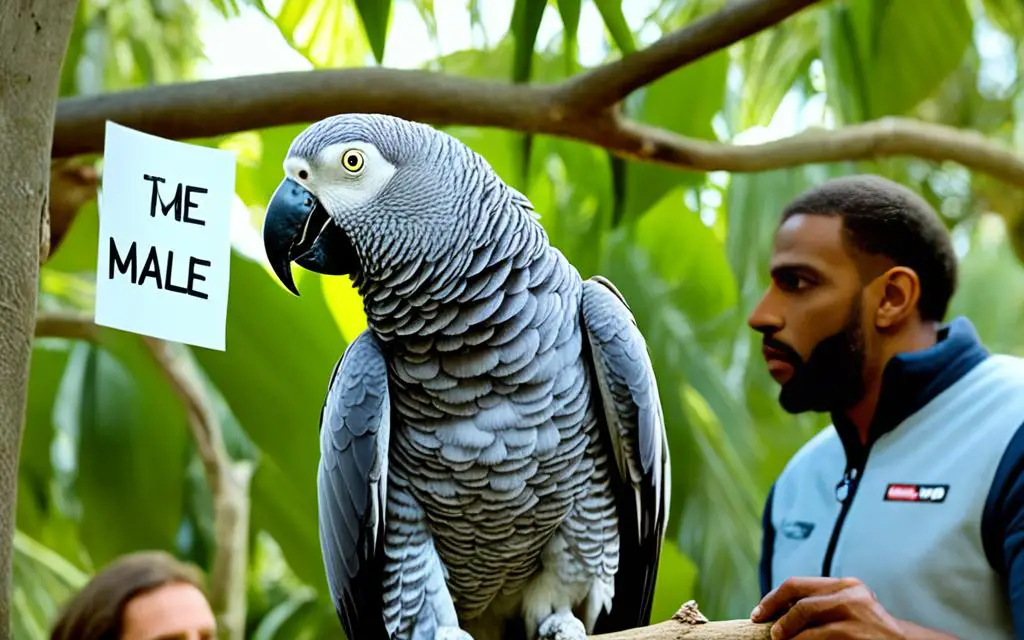
Remember, as you weigh the pros and cons, the individual bird’s history and how it was raised will likely play a larger role in your shared future than any generalizations about gender. Your attention to this choice highlights your commitment to providing the right home for your new avian companion. So, take your time, observe, ask questions, and most importantly, listen to the stories each bird has to tell. Ultimately, the most suitable African Grey will be the one that resonates with your spirit and gels with your world.
Legal and Ethical Considerations When Acquiring an African Grey
When you decide to adopt an African Grey, it’s not just about bringing a new pet into your home; it’s a step that carries significant legal and ethical implications. The first step in this journey should be considering whether to adopt from a rescue or to approach a reputable African Grey breeder. Adoption gives a bird in need a second chance at a loving home, whereas breeders can provide birds that may come from a long line of well-cared-for animals.
African Grey cost factors largely into your decision as well. Beyond the initial price paid to a breeder or adoption fee from a rescue, the costs encompass everything from a spacious cage to a nutritious diet, regular veterinary care, and a variety of engaging toys. These birds have lifespans that can extend over five decades, requiring a long-term financial and emotional commitment from you. Without proper consideration of these costs, owning an African Grey can become an overwhelming burden instead of a joyous companionship.
Moreover, acquiring an African Grey for sale demands an understanding of the species’ conservation status. With African Greys listed on the CITES Appendix II, it’s increasingly important to ensure that the bird you’re acquiring has not been taken from the wild, which would negatively impact the species’ survival and could involve you in illegal activities. By choosing to support conservation efforts, you contribute to the survival and ethical treatment of these intelligent creatures.
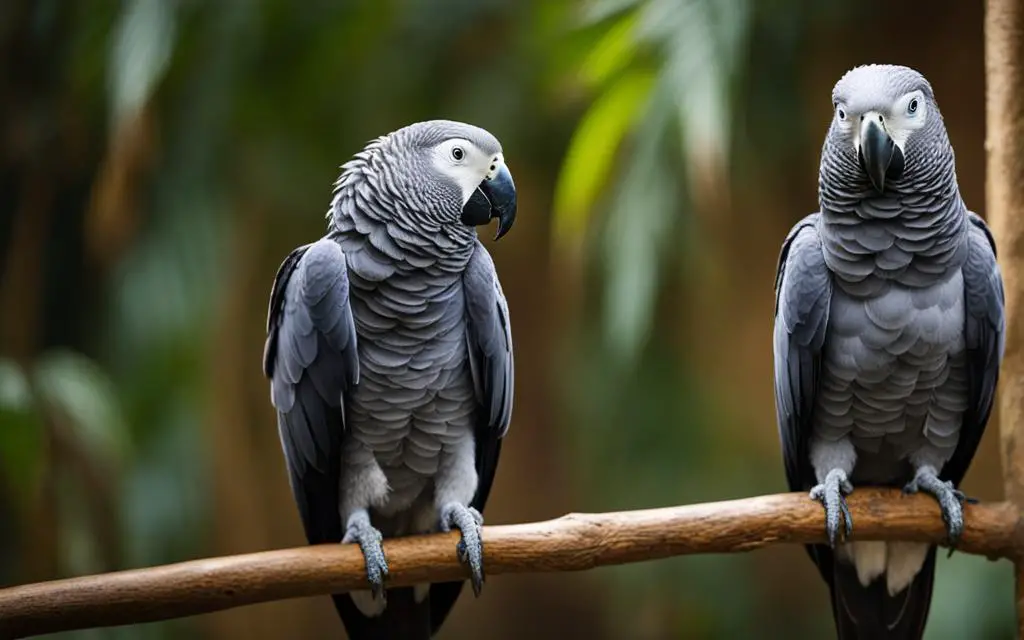
If you’re determined to welcome an African Grey into your family, consider the following table, which outlines the initial and ongoing costs associated with responsible ownership:
| Type of Cost | Description | Estimated Expense |
|---|---|---|
| Adoption/Breeder Fee | Cost paid at the time of acquiring an African Grey | $600 – $2,000 |
| Cage and Furnishings | Initial setup including cage, perches, toys, etc. | $100 – $1,000 |
| Food and Dietary Supplements | Monthly cost for pellets, fruits, vegetables, and supplements | $75 – $150 |
| Veterinary Care | Regular check-ups, emergency funds, any required treatments | $100 – $300 (annual check-ups) + Emergency Fund |
| Insurance | Optional but recommended to cover unexpected medical expenses | $200 – $400/year |
Embarking on the path to African Grey ownership should be done with foresight and an ethical compass. By understanding the full extent of what it means to care for an African Grey, you ensure not only the well-being of your new pet but also the peace of mind that comes with responsible parrot parenthood. Your commitment to an informed adoption or purchase can help safeguard the future of these fascinating birds.
Preparing Your Home for an African Grey
Setting up your home for an African Grey parrot is an exciting venture that requires thoughtful consideration to create an optimizing living space. Your new avian companion will thrive in an African Grey environment tailored to its unique needs for exploration, play, and comfort. This means investing in an appropriately sized African Grey cage, equipping it with an array of stimulating African Grey toys, and ensuring the safety of your cherished pet.
The cornerstone of your preparation will be the cage—an African Grey’s home within your home. The cage should be spacious enough to allow your Grey to flap its wings, climb, and play without restriction. Bar spacing is another crucial factor; it should be close enough to prevent escape but wide enough for them to comfortably navigate. Remember, the cage is not just a sleeping space—it’s a key aspect of your parrot’s environment.
Equally critical to the well-being of your African Grey is the type and variety of toys available. These intelligent birds require mental stimulation nearly as much as we do, making toys an essential part of their daily routine. From puzzle toys that challenge their intellect to chew toys that help maintain their beak’s health, selecting a variety of toys will help keep your African Grey engaged and happy.
As you venture into this journey, let’s take a closer look at what your African Grey cage setup might entail:
| Essential Components | Functionality | Benefits |
|---|---|---|
| Spacious cage | Sufficient for flight and play | Promotes health and well-being |
| Various perches | Encourage movement and foot health | Prevents atrophy and fosters agility |
| Diverse toy selection | Intelligence and beak maintenance | Reduces boredom and destructive behavior |
| Safe and non-toxic materials | For all cage and toy components | Protects against potential hazards |
| Steady placement | Prevents cage from tipping | Offers a secure environment for play |
Beyond the cage and toys, assessing the African Grey environment also means scrutinizing the safety of your home. Check for potential hazards such as electric wires, toxic plants, and accessible windows. African Greys are known to be quite the escape artists and can get themselves into trouble if given the chance. Taking preventive measures can help avoid accidents and create a secure environment for your feathered friend to explore.
Remember, creating the ideal home for your African Grey is about more than just furnishings—it’s about establishing a nurturing space that caters to their behavioral instincts and enables your bird to lead a stimulated, joyful life.
By methodically setting up for an African Grey, you are not only providing a habitat for your pet, but also demonstrating a commitment to their physical and psychological needs. This attentive approach will set the stage for a profound bond between you and your African Grey.
Understanding the African Grey Lifespan and Long-Term Care
When you welcome an African Grey into your life, you’re embarking on a remarkable journey that can span several decades. With an African Grey lifespan often reaching up to 60 years, it’s essential to prepare for the long-term commitment that comes with such a spirited and intelligent companion. This enduring bond will require a comprehensive approach to long-term care for an African Grey to ensure their continued health and happiness.
A comprehensive strategy for African Grey longevity begins with a stable and enriching environment. This should include plenty of opportunities for mental stimulation such as puzzles and toys, as well as social interaction to prevent boredom and stress. Regular health checks are also a cornerstone of long-term care for an African Grey, including preventative appointments with an avian veterinarian.
As African Greys mature, they require consistent behavioral reinforcement. Training and positive interaction should not wane as your bird ages; in fact, it remains just as crucial throughout their life to maintain sociability and nurture their cognitive abilities. By keeping your Grey engaged and responsive, you provide a foundation for a dynamic and fulfilling relationship.
One crucial aspect of long-term care for an African Grey that is often overlooked is planning for the future. What will happen to your feathered friend should circumstances change and you’re unable to provide care? Establishing a plan for who will take responsibility for your Grey’s welfare is part of the responsible ownership of such a long-lived pet.
You might also consider compiling a detailed care guide that includes your Grey’s routine, dietary preferences, and medical history. This precaution ensures continuity of care, so your African Grey can continue to thrive even if they eventually live with a new caregiver. It’s an act of love that safeguards the well-being of your bird well into its senior years.
Embarking on life with an African Grey Parrot is not a fleeting pleasure, but a rewarding journey that can span generations. It’s about providing love, care, and a nurturing environment every step of the way, ensuring the golden years of your African Grey are as vibrant as their youth.
Embrace the privilege of sharing your life with an African Grey parrot, and look forward to the rich tapestry of experiences your dedication to long-term care will weave. With an African Grey, you’re not just gaining a pet, but a friend whose companionship knows the test of time.
Conclusion
As you stand at the threshold of making a heartfelt decision on choosing an African Grey, factor in your lifestyle, expectations, and readiness for the in-depth commitment required. Whether considering a nurturing female or a robust male, the focus should be on compatibility that bridges the essence of the African Grey’s world to yours. African Grey bonding is a nuanced dance of mutual respect, understanding, and patience. Your prospective companion, irrespective of gender, demands a loving and stimulating sanctuary that echoes its natural habitat—a home where its personality can truly flourish.
Remember, the best African Grey for you is one whose traits and quirks resonate with your own spirit. This bespoke sync forms the foundation of an enduring friendship, transforming a mere adoption into a remarkable journey of shared growth and discovery. In the pursuit of this companionship, African Grey adoption presents a pathway to enrich your world with the bird’s colorful persona and a communicative interaction that rivals no other.
At the heart of this quest is not just a choice between male and female, but a deeper introspection into the joys and responsibilities of parrot parenthood. Each African Grey brings to the table a universe of individuality wrapped in its majestic grey plumes. Be prepared to embark with an open heart, receptive to the winds of bonding that will sail you through the life-long adventure with your feathered counterpart. This is your moment to define the contours of a lifelong bond, ensuring you and your African Grey thrive in unison, fulfilling the promise of truly extraordinary companionship.
FAQ
What are the main differences between Congo and Timneh African Grey Parrots?
How can I tell if my African Grey is male or female?
Does the gender of an African Grey affect its ability to talk or bond?
Are there any behavioral considerations I should know about before choosing an African Grey?
What are some visual clues that may indicate the gender of an African Grey?
Do male and female African Greys have different social behaviors?
Are there any myths about African Grey talking abilities and gender?
What special health and nutrition considerations should I have for male and female African Greys?
What should I consider when choosing between a male and female African Grey?
What are some legal and ethical considerations when acquiring an African Grey?
How should I prepare my home for an African Grey?
What does understanding the African Grey lifespan entail for long-term care?

My name is Shane Warren, the author behind Your Bird Buddy – your ultimate guide to the wonderful world of birds! Unleash your inner avian explorer as we delve into a vibrant library of knowledge dedicated to all things feathered. From learning about diverse bird species from across the globe to understanding their captivating habitats and behaviors, I’m here to fuel your passion for these magnificent creatures. Not only that, but I also provide valuable insights on being a responsible and informed pet bird owner. Join our vibrant community and let’s celebrate the feathered wonders of the world together – one chirp at a time. And be sure to join our Your Bird Buddy Community over on Facebook!

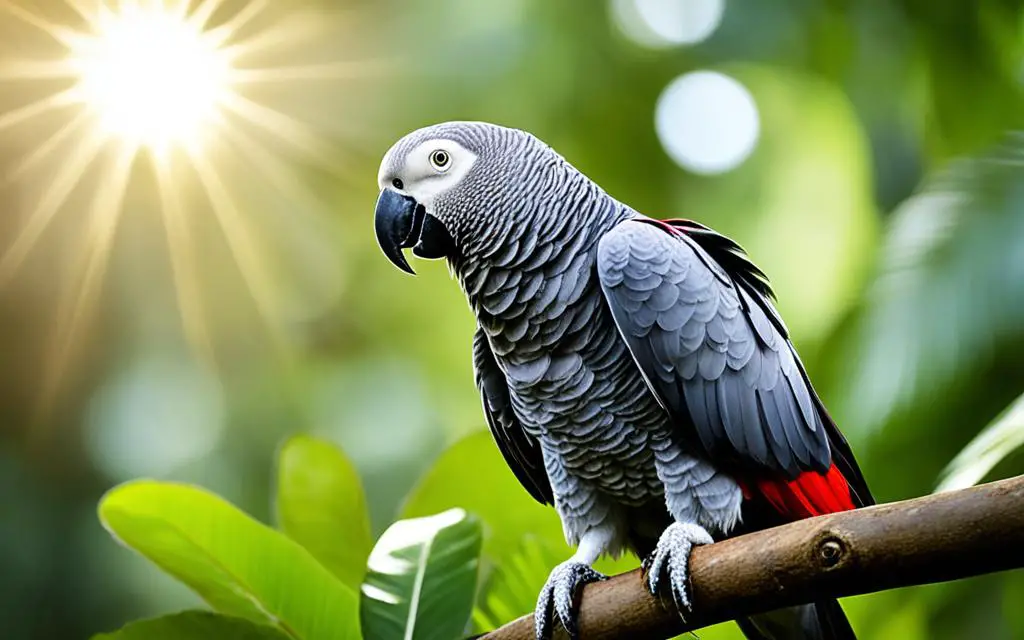
Comments are closed